#Czechoslovak Anarchist Society
Explore tagged Tumblr posts
Text
SOLIDARIDAD CON LOS TRABAJADORES DE UCRANIA QUE NO QUIEREN ALISTARSE.
La Sociedad Anarquista Checoslovaca (CAS) expresa solidaridad y apoyo a todos los hombres ucranianos que están evitando la movilización y el reclutamiento al refugiarse en Occidente.
INSUMISIÓN A SUS EJÉRCITOS.
La UE estima que hay aproximadamente 750 mil ucranianos que están en condiciones de luchar, pero se niegan a alistarse. La República Checa registra actualmente a 94.643 hombres entre las edades de 18 y 65 años, a quienes se les ha otorgado protección temporal relacionada con la guerra en Ucrania y que están sujetos a movilización.
-----------------------------------------------------
🇬🇧 SOLIDARITY WITH THE WORKERS OF UKRAINE WHO DO NOT WANT TO ENLIST.
The Czechoslovak Anarchist Society (CAS) expresses solidarity and support for all Ukrainian men who are avoiding mobilization and conscription by taking refuge in the West.
INSUBORDINATION TO THEIR ARMIES.
The EU estimates that there are roughly 750 thousand Ukrainians who are fit to fight, but refuse to enlist. The Czech Republic currently registers 94 643 men between the ages of 18 and 65, who have been granted temporary protection related to the war in Ukraine, and who are subject to mobilization.
SEGUIR LEYENDO/READ MORE: 👇
#solidarity#ukraine#conscription#anticonscription#workers solidarity#workers#cas#Czechoslovak Anarchist Society#czechoslovakia#czechoslovak#antifa#antiauthoritarian#anti capitalism#anti cop#antinazi#russia#ausgov#politas#auspol#tasgov#taspol#australia#fuck neoliberals#neoliberal capitalism#anthony albanese#albanese government#antifascist#antifascismo#antifaschistische aktion#antifaschismus
3 notes
·
View notes
Text


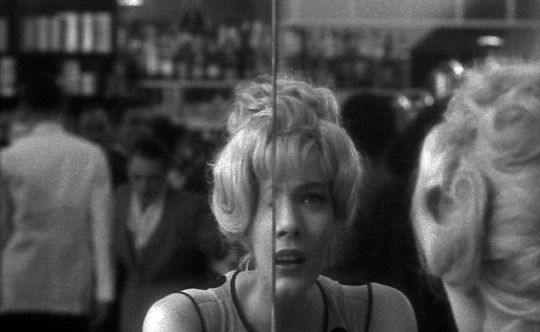
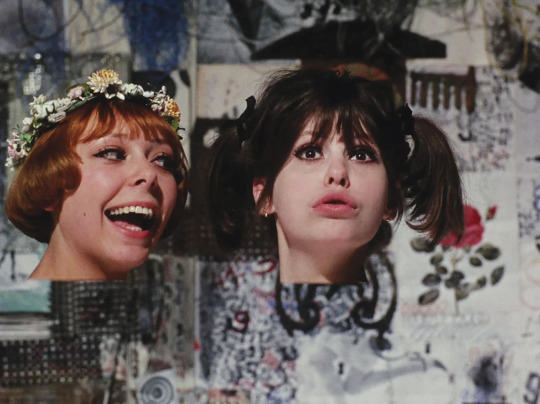
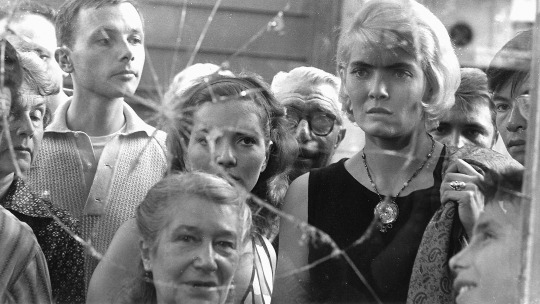
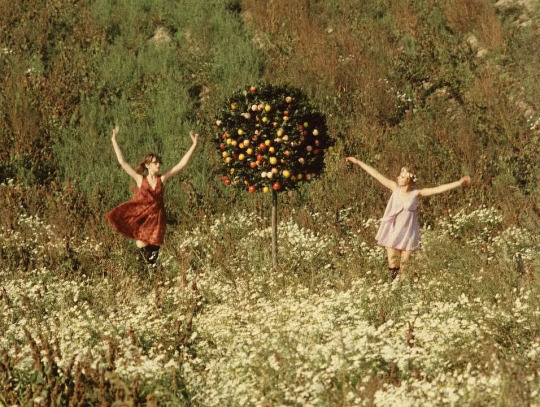
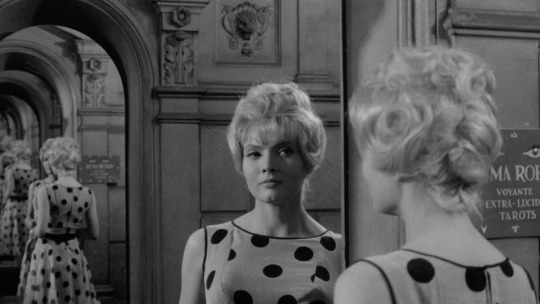
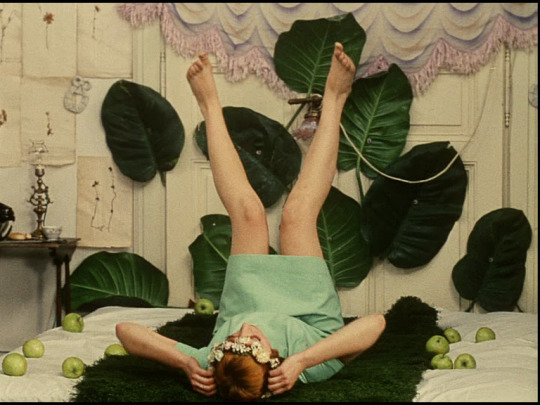
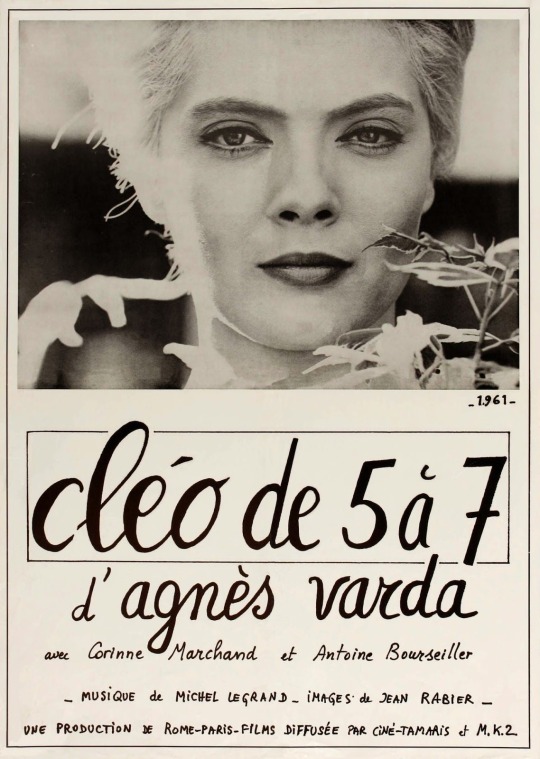
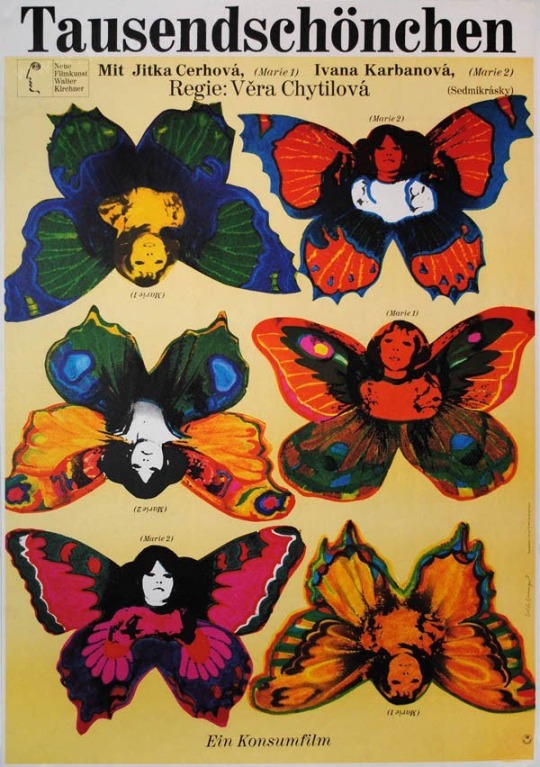
Cleo from 5 to 7 (1962)
Directed by: Agnès Varda
Daises (1966)
Directed by: Věra Chytilová
Sorry for the long scroll. This is an essay I did for a class about a year ago. It was on two women directed foreign films Cleo from 5 to 7 and Daises. In the paper I get into a lot of the similarities between the films and what they do well, but I don’t get to really give my opinion on them. Both the Czech Daises and French Cleo are wonderfully unique. Daises was chaotic, fun, and plotless. I really had to work to eek out some meaning from that one. Cleo from 5 to 7 caught me by surprise of how much I loved it. It’s one of the best films I’ve ever watched. I don’t always judge films objectively like I ought to. Usually if there is an extremely stuck up, narcissistic lead character in a movie it turns me off. I’m not really interested in seeing personality types like that. Cleo from 5 to 7 breaks through for me though. The evolution of Cleo’s character is based so much on real experiences that I find it to be such a truthful story, with layers of weighty symbolism.
———————————————————————
The Timid Cleo and the Bold Daises
Through the Nineteen-sixties feminist movements could be seen sprouting all across the globe. The art, music, and filmmaking alike from these periods captured and spread these feminist ideals. Agnes Varda in France and Vera Chytilová in Czechoslovakia were women film directors who made films with women’s issues in mind. Varda’s Cleo from 5 to 7 is a slow, plot driven drama that follows, as David Cook puts it, “the life of a young pop singer who is waiting for a lab report that will tell her whether she has cancer” (Cook 370). Vera Chytilová ’s Daises appears to be a plot-less comedy headed by an anarchic female duo. Both films were made in patriarchal societies and appear to take place in them. The two films explore how their women protagonists deal with being seen as objects of beauty in these male dominated worlds. Cleo struggles with finding her self-worth outside of her superficiality and feels like maintaining her beauty is tied to that self-worth. Marie I and Marie II in Daises inversely have no questions about their self-worth and use their objectivity to their advantage. The Maries thus have less evolving to do in comparison to Cleo who’s journey it is to detach her pride from her beauty.
Cleo wallows in fear as she awaits the results of her biopsy. Everyone she would consider “close” to her, like her assistant, her boyfriend, and her pianist seem uninterested in her troubles or are unwilling to give her a comforting ear. That is until Cleo meets up with her old friend from art school, Dorothee. After a stressful day Cleo heads to the sculpting studio where Dorothee works as a nude model. As Cleo walks into the studio the camera appears to give us a first person shot from Cleo’s perspective. It’s a slow, apprehensive moving shot into the room where the sculpting is happening, giving us the feeling that Cleo is uncomfortable with what’s happening. Then we see Dorothee posing naked still in the middle of the class and she meets eyes with Cleo. She does not appear embarrassed in the slightest, on the contrary she is excited to see her friend. Cleo waits for Dorothee to finish her shift and get changed so they can walk out together. We learn as they talk that Cleo was in fact uncomfortable in the studio as she tells Dorothee that she would be “afraid people would find a fault” if that was her. Dorothee responds with one of the most profound quotes of the film and one that seems to stick with Cleo. Dorothee says “my body makes me happy, not proud” meaning that she can be happy about the way she looks without having her self-esteem or pride being affected by it. Through the first half of the film Cleo had been overtly concerned about her disease possibly affecting her appearance. This is exemplified by her constantly checking in mirrors to see if she is still pretty. It appears that to Cleo her beauty and fame are all she is good for. She sees herself through the patriarchal lens. For example, Cleo’s never present boyfriend shows up to her apartment for a quick chat in which he avoids the topic of her sickness and extols upon her beauty for five minutes until he leaves. Also, a few minutes later Bob, her pianist shows up and jokes about how he’s attracted to her because of her money. The possibility of a cancer diagnosis forces Cleo to start thinking the way Dorothee thinks. Allison Smith writes about Cleo’s cancer that “Her knowledge of its existence therefore obliges her to see herself differently, to take account of her own awareness” (Smith 97). This focus on the world outside of herself helps her find someone who actually cares about her and not just her good looks. That person is the soldier Antoine. Even though he finds her beautiful that is not the only aspect of Cleo that he is invested in. He cares about her health; the only other character in the film besides her longtime friend Dorothee that truly worries about her diagnosis. Cleo ultimately finds solace in the fact that she has made a real, non-superficial relationship with another human being. The protagonists in Daises also are involved in superficial relations, yet they do not perceive them as negative the way Cleo does.
The two young woman named Marie who headline the film Daises have no qualms about being objectified. Like Cleo, everywhere they go, they capture the gaze of men. The Maries are comfortable within themselves enough to use their beauty as a tool for their own benefit. From the outset of the film the girls exclaim that they intend to spoil themselves, so using men for free dinners and then dropping them like used napkins afterwards naturally follows. One such occurrence happens in a scene where the red headed Marie is over at the apartment of some butterfly collecting pianist. The man creepily exclaims his love to her through a poem while Marie poses nude for him. He calls her Julie, giving us the impression that Marie gave him a false name, just like the Maries do with all the men they meet. Handing out false names shows the lack of commitment and respect they have for the men they toy with. Once Marie starts to put her bra back on, the pianist gets angry and says, “I wish you’d never come into my life!” Marie knows exactly how to play him though and the next thing he sees is Marie holding two framed butterflies over her exposed chest. The man completely reverts back to exclaiming his love for “Julie”. Marie uses this opportunity to ask for the one thing that the Maries always want, food. Women overeating is just one of the patriarchal taboos that Daises flips on its head.
The characters of this film go against the traditional patriarchal ideals of what women should be. Women are used to having their beauty be used against them and for the pleasure of men, but in Vera Chytilová ’s film the Maries use their beauty against men and for the pleasure of themselves. Traditionally women also have been forced into the submissive role in society, where they have to keep themselves composed and presentable constantly. To the Maries that is not even a thought that crosses their minds. They do not adhere to being the submissive ones, in fact they control the dialogue and direction of every interaction with men in the film. Laurel Harris seems to agree with me when he writes “…the Maries’ hysterical excess is a calculated response to inadequate roles in their society for individuals of their age and gender” (Harris 4). The duo also does not worry about seeming composed or mannerly when scoffing down pastries and appetizers in crowded restaurants. In antiquated gender roles women are made to watch how much they eat so they can maintain their figure, but at dinner with one of their suckers, one Marie asks the man “Are you on a diet?” I agree with Peter Hames assessment of Daises’ conception when he writes “Since women have been excluded from productive behavior, they have turned to art and play” (Hames 87). Hames is saying that Vera Chytilová ’s film is a reaction to woman being controlled for far too long. Whether Chytilová set out to make a feminist film or not the end result for Daises is a film that does not judge its non-conformist female characters.
Cleo from 5 to 7 is more explicitly set in a male run society. Agnes Varda created a character in Cleo that starts off fully invested in that societal structure. Her happiness is tied up into her superficial being, but because of the cancer she is forced to take account of what truly is meaningful in her life. She starts to crave caring relationships with people who recognize her for more than just being a pretty pop star. Cleo finds the power within herself to break out of the caged existence of women in a male dominated society. Cleo at one point in the film rips off her wig and gives away her fashionable hat; two symbols of conventional female beauty. Cleo from 5 to 7 and Daises both represent women’s lives in these feministic ways.
The two women filmmakers Agnes Varda and Vera Chytilová end up making similar films in that they have themes of women empowerment. Yet, the way in which its illustrated in each film is drastically different. Chytilová’s Daises wastes no time in showing the viewer that women can be unapologetic anarchists. There is no preconception of womanhood that the Maries have to fight to overcome. They just are empowered women. Cleo from 5 to 7 shows the evolution that a particular woman has to make to escape from seeing herself as just an object. These films helped inspire a generation of women in not conforming to typical patriarchal standards.
Works Cited
Cook, David A. “Chapter 13.” A History of Narrative Film. W.W. Norton, 2016.
Hames, Peter. “The Golden Sixties: The Czechoslovak New Wave revisited.” Studies in
Eastern European Cinema, 2013.
Harris, Laurel. “Czech New Wave Cinema: The Children of Marx and Kafka.” PopMatters, PopMatters, 30 Mar. 2002.
Smith, Alison. “Agnes Varda.” Manchester and New York, Manchester University Press, 1998.
#barbosafilm#movie review#cleo from 5 to 7#agnes varda#daises#věra chytilová#french film#czech film#feminism#feminist film#women in movies#women in film#female lead#movies#film photography#film#movie poster#film review#cinematography#director#screenshots#jitka cerhová#ivana karbanová#corinne marchand#1966#1962#michel legrand#French feminism#movie stills#film reviews
122 notes
·
View notes
Text
Petty-bourgeois Revolutionism and Reformism

Originally appeared in Communist Viewpoint, May-June 1970. By Don Currie.
Fundamentally, petty-bourgeois theories of "reform and revolution" objectively serve capitalism. The petty bourgeoisie as a middle class is undergoing rapid destruction in the advanced capitalist countries. Under the hammer blows of monopoly it vacillates between the monopoly bourgoiesie and the working class—hence its ideology is vacillating, contradictory, inconsistent and unscientific. The working class and the Communist Party always seek the support of the non-working-class strata of the population in the struggle against the common enemy, monopoly.
At a time of rising mass movements in which the working class is beginning to assert its leading role, the ruling classes in the advanced capitalist countries require a variety of forms and forces to fight scientific socialism and the Communist movement. Petty-bourgeois theories penetrate the working-class movement disguised as neo-Marxism and perform a service to the monopoly bourgeoisie by engaging and oppoinsg Marxism-Leninism. The proponents of anti-communism consciously utilize and manipulate these trends since they all espouse anti-Sovietism. Herein lies the great value of the petty-bourgeois "revolutionary and reformist" ideologists to the monopoly bourgeoisie.
The opportunism of the petty-bourgeois ideologists lies in their worship of spontaneity, contempt and fear of the working class. At best they indulge in a superficial critique of capitalism, but do not seek to change it fundamentally through struggle to transfer political power to the working class and its allies—the dictatorship of the proletariat. They strive to stand between the working class and the monopoly bourgeoisie. The effect of petty-bourgeois ideology within the working-class movement is to maintain the working class as an appendance of the bourgeois parties and to divert the working class from the Marxist-Leninist vanguard parties.
The proponents of petty-bourgeois theories of "reform and revolution" are becoming more active and are assuming new forms. There has been a coalescence, an interpenetration and identity of views between revisionist trends, various forms of petty-bourgeois revolutionism and petty-bourgeois reformism in Canada.
On the face of it these anti-Marxist trends appear to have differences. These differences, however, are not on fundamentals. On fundamnetal questions of bourgeois ideology there is agreement.
On what basic questions is there agreement among petty-bourgeois revolutionists, reformists and revisionists? First of all, tehre is the rejection of the fundamental question of Marxism-Leninism, i.e., the dictatorship of the proletariat and the leading role of the Marxist-Leninist vanguard party. They all counterpose leninism to Marxism and deny that Leninism is Marxism in the era of the world-wide transition from capitalist to socialism, in the era of the socailist revolution and the building of socialism.
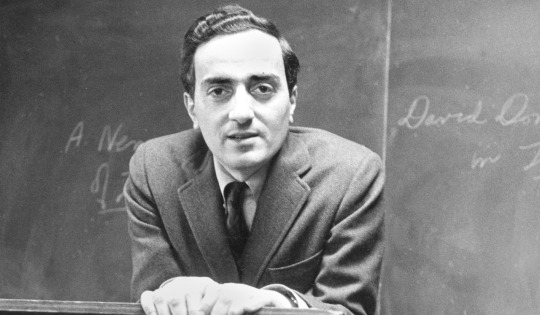
In the July 1969 issue of Canadian Dimension, Professor Eugene Genovese, Professor of History at Sir George Williams University in Montreal, declared, "Leninism, a brilliant success in underdeveloped countries, has been a dismal half-century failure throughout the advanced capitalist world . . . the American left must find a third way or forever wander about in despair and impotence."
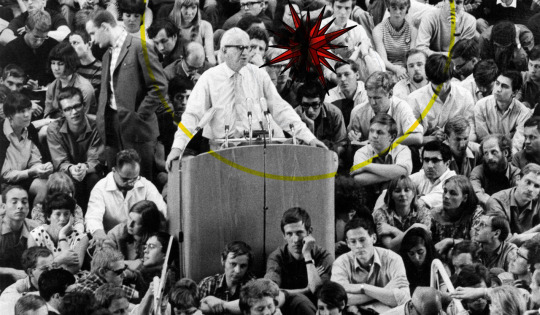
The "third" anti-Leninist way is being diligently sought after by the petty-bourgeois ideologists. What this "third way" should be was offered by Herbert Marcuse, the oracle of the "New Left" and darling of the CIA. Marcuse's system of views is a non-class, anti-Marxist view. Marcuse asserts that there are no exploited classes, only "repressed" majorities. He calls upon this "repressed" majority to "carry out a radical change, revolution in and against highly developed technically advanced society." This call for revolution is without distinction equally applied to socialist as well as to capitalist countries. Marcuse is rabidly anti-Soviet and advocates "libertarian socialism." Marcuse blandly dismisses the working class as the motive force for revolutionary change, declaring that "it is to a great extent integrated into the system." According to eMarcuse the motive force for "radical change" is the amorphous "repressed majority" led by the "New Left." The need for a Communist Party is declared by Marcuse to be outmoded. "What we can envisage is not this large centralized and coordinated movement but local and regional political action against specific grievances—which will depend on political guidance and direction by militant leading minorities."
This elitist, profoundly reactionary theory is popularly known by the pseudonym "New Left." It is the ideology of the petty-bourgeois reformists and assorted self-styled revolutonaries who attempt to lead these movements in the direction of deaf and accomodation to capitalism. (It is not to be confused with the mass movements that are arising in capitalist coutnries directed against monopoly rule.)
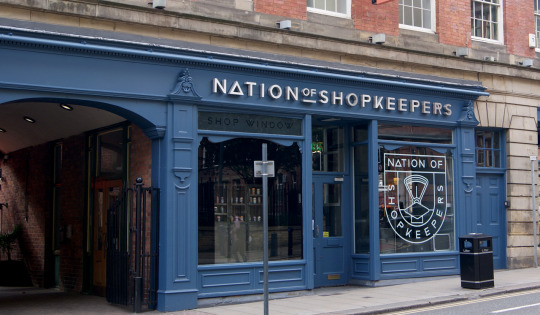
The "New Left" is not new and it is not left. It is a variety of petty-bourgeois ideology in the period of sharpening class battles in the advanced capitalist countries. It arises objectively as a result of the continuing destruction of the petty bourgeoisie. It is the world outlook of a doomed class—hence it is despairing, anarchist, adventurous and inconsistent.
Prior to the anti-monopoly movements in the advanced capitalist countries, especially in the U.S.A., assuming the mass character they have now reached, petty-bourgeois reformism and revolutionism was confined to the universities and to small sects in the labour movement. As the crisis within the advanced capitalist countrise deepens and socialism and Marxism-Leninism become a point of attraction for the masses, petty-bourgeois revolutionism leaves the confines of the universities and attempts to penetrate the labour movement. It seeks to lead the working class away from struggle into opportunist and adventurous dead ends.
The defeat of the sally of imperialism in Czechoslovakia was a powerful setback to petty-bourgeois revolutionism everywhere in teh world. It was in Czechoslovakia where all of these tendencies emerged as united anti-socialist force, encouraged, aided and abetted by imperialism in a vain attempt to resurrect bourgeois democracy. It is interesting to note in passing that large numbers of the more prominent "New Left" leaders from North American "happened" to be in Czechoslovakia coincidentally within the August 1968 events.
Among these was James Harding, Canadian "New Leftist" who was interviewed in the student-radical journal New Generation of which he is an associated editor. Harding said that the Czech "reformers" aimed at three goals: 1. Special status for the Slovak people; 2. Abolition of the centralized power of the Communist Party to be replaced by a socialist pluralism and 3. Adoption of a Yugoslav type economy. "I strongly favor the first two," Harding declared.
Harding's gratuitous support for the Czech "reformers" reflected the position of the main tendency within the "New Left" movement at the time. In essence it threw its support behind anti-Sovietism, anti-communism, bourgeois nationalism and reaction all down the line and was diametrically opposed to the fundamental interests of the Czechoslovak people.
Gustav Husak in the January 1970 issue of World Marxist Review replied to all such "friends" of Czechoslovakia and their theories of a "reformed" socialism:
"It is to Lenin's credit that he smashed the theories of spontaneity advocated by all kinds of opportunists who held forth about capitalist automatically growing into socialism. Lenin substantiated the need for the Communist Party actively to influence the historical process. Our Czechoslovak experience corroborated the soundness of Lenin'st eachings on the need for a new kind of revolutionary party, the vehicle for revolutionary class consciousness, for a party that will be the leading political force in socialism and the organizer of the masses."
The identify of views between revisionism and "New Leftism" is borne out by Gustav Husak's description of the attitude of the Right tendency in the leadership of the party:
"The former party leadership, or ratehr its Right-opportunist-minded section, made no effort to show that Leninism as a class doctrine makes a distinction between capitalist society and socialist society, that there can be no return to the model of bourgeois democvracy because socialism is based on public ownership of the means of production, that its class and social structure differ from the class structure of any capitalist state . . . In capitalist society power is in the hands of the bourgeoisie and is used against the exploited. In socialist society, on the contrary, all power is in the hands of the working people, headed by the working class."
". . . That is why our party cannot and will not unite on the basis of an accentuated national exclusiveness, that is, nationalism; cannot and will not unite on the basis of anti-Sovietism. On the contrary, the only correct Marxist-Leninist way to unity of our party is unification based on the scientific world outlook of the working class, building a mature socialist society in our country based on proletarian internationalism and socialist patriotism, on the principles of close cooperation and friendship with the Soviet Union and other socialist states and with the international Communist and working-class movement."
This is the answer of the whole international Communist movement to the attempt of the imperialist forces, in collusion with and with the active assistance of the petty-bourgeois reformist forces to mount an attack on socialism from within.
Petty-bourgeois reformism and organized labour
The setback of the petty-bourgeois theories of "democratization of socialism," "libertarian socialism," "the students as the new revolutionary vanguard" has compelled further refining of petty-bourgeois revolutionary theories. The Guardian, U.S. petty-bourgeois radical-paper, sees strength in the basic weakness of "New Leftism" in its rejection of Marxism-Leninism. The Guardian declared, "The great strength of the New Left has come from its ability to change course when the demands of the political struggle indicate change."
The petty-bourgeois radicals in Canada are trying to turn their recent defeats in victory by centring more attention of the organized labour movement. This is a more dangerous tendency since the leadership of this trend in Canada is spearheaded by a group of petty-bourgeois reformist intellectuals who hold prominent positions in the New Democratic Party.
The emergence of the petty-bourgeois reformist group at the last convention of the NDP has been hailed in the bourgeois press as the emergence of a new socialist party.
Marxists do base their assessment of political movements on what these movements say about themselves and much less on what the capitalist press says about them. The Central Committee of the Communist Party of Canada greeted the emergence of the "Manifesto" of the group. It is a reflection of the growth of militancy in the trade unions which is finding reflection in the NDP. This development takes place on the background of the growing rank-and-file criticism of the policy of the right-wing social-democratic leadership of the trade union movement which has pursued a cold-war class-collaborationist course within the unions throughout the entire post-war period. This old encrusted leadership rose to power during the advent of the cold war and aided and abetted the anti-Communist campaigns within the unions. Today more and more Canadian unions are wiping out anti-Communist clauses in union rules and demanding militant bargaining, more political action to defend the right to strike, picket and organize, and counter the state-monopoly drive to impose an incomes policy on the working class with a program expressing the interests of the working people.
The Central Committee of the Communist Party of Canada statement wanred that the manifest of the Watkins group evades "the central question of genuine socialist policy," the attitude to the state and working-class power, the leading role of the working class in bringing about social change, the overriding necessity of working-class and trade union unity and unity of the left in the struggle to achieve it. "Needless to say the struggle for genuine socialist policies cannot succeed around anti-Communist banners," the Central Committee declared.
The group, known as the Watkins group after its best-known spokesman, Melville Watkins, declares in its manifesto: "A central objective of Canadian socialism must be to further the democratization process in industry. The Canadian trade union movement throughout its history has waged a democratic battle against so-called rights and prerogatives of ownership and management. It has achieved the important moral and legal victory of providing the working men an effective say in what their wages will be."
The implication of the statement is that the exploitation of the working class has ceased except for its exclusion from having a say over the introduction of technological change. If this were achieved, the working class would have competed the struggle for socialism. "What is needed," claims Anthony Carew, research director for a large Canadian rail union, a Watkins supporter and advocate of "industrial democracy," "is a system of industrial democracy which will parallel our political democracy." Ed Broadbent, NDP Memebr of Parliament, goes further and claims such a reform would mean the winning of socialism. Broadbent claims, "A socialist society is one in which there is direct or indirect democratic control in all institutions which have a major effect on a man's life . . ."
The petty-bourgeois reformist theory of industrial democracy, also referred to as "workers' control," is an attempt to deny the objective nature of the class struggle, the necessity of overthrowing capitalism and the establishing of socialism. It is a wholly reformist view of the road to socialism. It is the reflection of the propaganda of the monopoly bourgeoisie that modern capitalism has done away with classes and class struggle and has overcome the fundamental contradction between social production and private appropriation. The fact that petty-bourgeois reformist leaders of the trade union movement peddle this view doesn't make it any less reactionary and wrong.
One of the authors of the manifesto, Charles Taylor, vice-president of the NDP, outlines a theory of classes in no way dissimilar to that of Marcuse except for the jargon used. In contrast to Marcuse's assertion that the working class has been "integrated into the bourgeoisie," Taylor asserts that the big line of division in society is "between the majority who participate in the affluent society and the one-quarter of the population who live in or below the poverty line." The effect of the attempt by the reformists to divert the attention of the trade union movement to the fight for "industrial democracy" is many-sided and full of pitfalls for the working class.
To raise the slogan of "industrial democracy" at a time of intensification of the attack by monopoly on the living standards of the working class detracts and weakens the wage movement.
The reformist claim that to direct the trade union movement to teh struggle for "worker control" now is a revolutionary proposal and will by itself lead to the rise of socialist consciousness is a denial of the srength and need for the scientific theory of Marxism-Leninism to triumph among the most advanced sections of the working class and of the need for the Communist Party guided by scientific socialism to lead the struggle for socialism. Socialism cannot arise automatically from the struggles by the trade unions for reforms. Socialism can only be achieved by a revolutionary struggle for power which transfers political power from the capitalis class to the working class.
A telling criticism of these petty-bourgeois reformist theories was given by Gus Hall, general secretary of the Communist Party of the U.S.A., to their 19th convention and deserves wide discussion among trade unionists. Comrade Hall said: "Now we should be clear that we are for higher economic demands. We are for taking away the prerogatives the bosses should never have had to begin with.
"But we must ask: What is the effect of demands in the area of what is called control off the process of production when the question of ownership of industry is not on the order of the day? When demands for workers' control are related to questions of change of ownership of industry from private to public, there are no problems. Now some will say 'If that is the problem, why not throw in the idea of take-over?' But that of course is nonsense unless the objective conditions are ripe for it. The idea that simply demanding control will create the objective conditions is no less nonsense."
"Demands for control which are made when the objective conditions are not at the level for a take-over tend to turn into their opposite. They are demands for control over industries that will continue to be privately owned and will continue to operate for private profit. Under these conditions, they become demands for class partnership. They are based on the concept of labour and management operating the plant smoothly together. Even the struggle for such demands tends to create the partnership concept.
"Some ideologists on the 'New Left' have now raised the question fo the fight against management prerogvatives as being 'revolutionary' in nature, seeking to set this issue against other important demands of the workers, especially wage demands. Some even go to the extent of describing the struggle for higher wages as corrupting and exerting an anti-revolutionary influence on workers and the trade union movement.
"The Communist Party rejects such doctrines. Both the struggle for higher wages and the struggle against management prerogatives are struggles for reforms. Inherent in both struggles is the possibility of increasing the class consciousness and socialist consciousness of the working class, if Communist and other class-conscious wrokers are in tehse struggles and exert such influence."
It is the Communists that give the mass movements of the people a revolutionary orientation. It is Marxism-Leninism in action, the organized purposeful activity of the vanguard party that can join reforms to the struggle for socialism. Any description, analysis or policy that divorces the Communist Party from the working class, which fails to take into account the role the Marxist-Leninist party must play at every stage of the struggle lands in the camp of petty-bourgeois reformism or revolutionism.
The fact that many would-be revolutionaries advocate petty-bourgeois theories with the best of intentions only points up the challgenge to the Communists to win all those who are seeking a revolutionary alternative to the ideas of Marxism-Leninism.
"The big bourgeois is case-hardened; he knows that under capitalism a democratic republic, like every other form of state, is nothing but a machine for the suppression of the proletariat . . . The petty bourgeois, owing to his economic position and his conditions of life generally, is less able to appreciate this truth, and even cherishes the illusion that a democratic republic implies 'pure democracy,' 'a free people's state,' the non-class or super-class rule of the people, a pure manifestion of the will of the people, and so on and so forth." - V.I. Lenin
25 notes
·
View notes